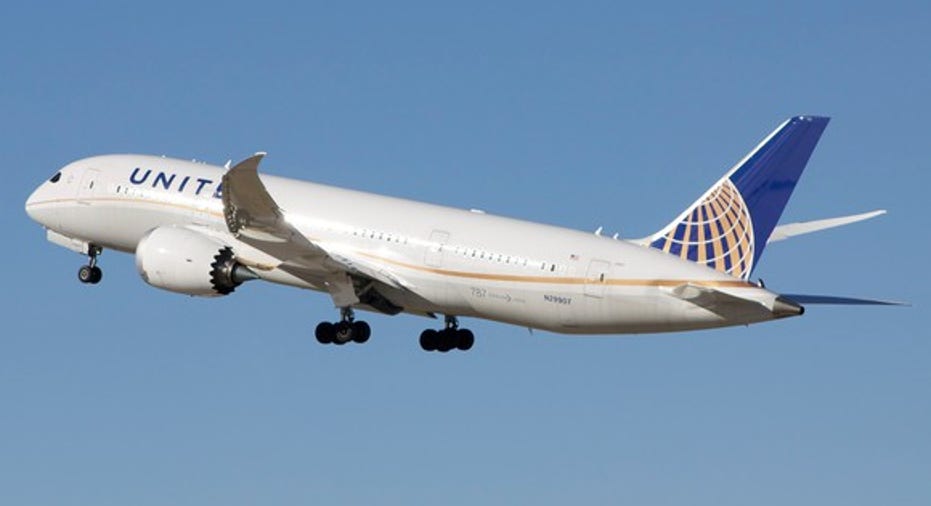Boeing's Dreamliner 787-10: Late Bloomer or Complete Bust?

Three years ago this week, Boeing officially launched the third and largest variant of its groundbreaking Dreamliner jet: the 787-10. At the time, Boeing had secured 102 orders from two leasing companies and three major global airlines, including United Continental .
However, sales have been extremely slow since then. Today -- with less than two years to the first 787-10 delivery -- Boeing has only 153 orders from nine customers for the largest Dreamliner variant. Naturally, that has some pundits wondering whether the 787-10 is just a dud.
Boeing's 787-10 has been the slowest-selling Dreamliner variant so far. Image source: Boeing.
The mixed history of stretches
The 787-10 is designed as a straightforward "stretch" of the popular 787-9. Stretched aircraft are typically quite fuel efficient, because they add more seats with only modest increases in fuel consumption. On the other hand, they generally offer less range and in some cases could face payload restrictions, limiting their cargo-carrying ability.
As a result of these trade-offs, the sales history for stretched aircraft is mixed at best. Pessimists might liken the 787-10 to Boeing's 767-400ER widebody. Boeing managed to sell just 37 767-400ERs to two customers: Continental Airlines and Delta Air Lines. Range limitations were probably a big reason why it never caught on like the smaller 767-300ER. (It didn't help that the 767-400ER became available just as the aviation industry was entering a multiyear downturn.)
The 777-300 -- a simple stretch of the 777-200ER -- didn't perform much better, with only 60 sold. In this case, range/payload limitations were almost certainly the culprit. Boeing later launched the 777-300ER, offering more range and more powerful engines with the same fuselage. It eventually became the best-selling 777 variant, with 800 cumulative orders.
Which one is the 787-10?
The 787-10 does have some of the drawbacks of previous stretched aircraft. However, the 787-9 was designed as an ultra-long-haul aircraft. In fact, United Continental just began serving one of the longest airline routes in the world -- San Francisco-Singapore -- with a 787-9.
As a result, even with the loss of range that comes from stretching the 787-9, the 787-10 will still be able to serve most long-haul airline routes. According to Boeing, the plane's range will be 6,430 nautical miles. That's within 1,000 nautical miles of the 777-300ER's advertised 7,370 nautical mile range.
That provides some hope that the 787-10 will be much more successful than the 767-400ER or the 777-300, albeit perhaps not quite as popular as the 777-300ER.
Airlines will need a plane like this
Beyond the 153 787-10s that Boeing has already sold, Middle Eastern airline giant Emirates is weighing a potentially large order that would be split between the 787-9 and 787-10. (Airbus' competing A350-900 is also in the running.) Emirates plans to finalize its order later this year.
Longer-term, one of the biggest missions for the 787-10 will be replacing the similar-sized 777-200 and 777-200ER. Boeing sold more than 500 of those smaller 777 variants, most of which were delivered between 1995 and 2003. That means they will be ripe for replacement between 2020 and 2030.
The 787-10 will offer more range than the 777-200 and nearly as much as the 777-200ER, while consuming much less fuel. As airlines begin to retire their older 777s, Boeing could benefit from a wave of 787-10 orders.
United Continental alone operates 74 777-200 and 777-200ERs with an average age of 17 years. It has already ordered a handful of 787-10s as 777 replacements. To be fair, some of United's older 777s will be replaced with larger 777-300ERs and A350-1000s. Still, the carrier could be in the market for dozens more 787-10s in the next decade.
United Airlines plans to expand its Dreamliner fleet to include the 787-10. Image source: The Motley Fool.
Likewise, British Airways has ordered a handful of 787-10s, but not nearly enough to replace all of its 777-200s and 777-200ERs. Within the next five years, it could be in the market for more 787-10s.
Plenty of opportunity here for the next 15 years
In short, the 787-10 will be able to address a large replacement market, in addition to airlines' future growth opportunities. Its slow start can probably be attributed to three factors.
First, 777 replacements won't begin in earnest until 2020. Second, as the Dreamliner order backlog has moderated, airlines have felt less compelled to order new planes five years or more before they are needed. Third, low fuel prices have increased airlines' willingness to hold onto older, less fuel-efficient aircraft.
The first two factors are transitory. As 777 retirement dates get closer and 787 availability improves, the 787-10 order pace should naturally improve. As for fuel prices, cheap oil is driving huge production cuts, which could sow the seeds for the next oil rally. Boeing just has to be patient. If and when oil prices spike again, airlines could quickly fall in love with the 787-10.
The article Boeing's Dreamliner 787-10: Late Bloomer or Complete Bust? originally appeared on Fool.com.
Adam Levine-Weinberg owns shares of The Boeing Company and United Continental Holdings, Inc. and is long January 2017 $40 calls on Delta Air Lines, Inc. The Motley Fool has no position in any of the stocks mentioned. Try any of our Foolish newsletter services free for 30 days. We Fools may not all hold the same opinions, but we all believe that considering a diverse range of insights makes us better investors. The Motley Fool has a disclosure policy.
Copyright 1995 - 2016 The Motley Fool, LLC. All rights reserved. The Motley Fool has a disclosure policy.



















